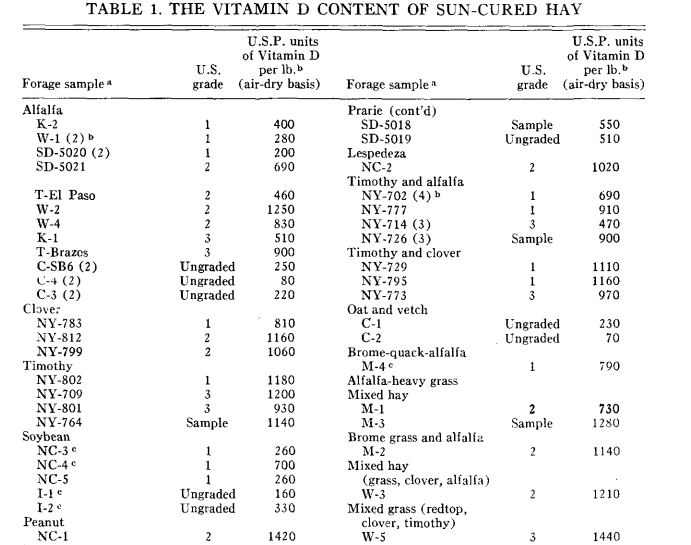Sun-cured hay often has 2000 IU of vitamin D per kilogram
Fresh hay has 2000 IU of vitamin D per kilogram 1999
By Christine Barakat
Fast fact: Vitamin D is the only nutrient more abundant in dried forage than in fresh.
How your horse uses it: Both types of vitamin D-D2 and D3-help maintain your horse's critical electrolyte balance by binding to calcium and magnesium, aiding in their absorption.
Where it's found: Your horse synthesizes vitamin D3 within his body when ultraviolet rays from sunlight combine with a form of cholesterol naturally present in his skin. Vitamin D2 is found in the dried leaves of cut plants that have been exposed to sunlight-in other words, hay.
Dietary requirements: No specific requirements for vitamin D in horses have been established, but a horse who spends several hours a day outside or who receives dried forage will get a sufficient amount. Sun-cured hay initially contains 2,000 IU of vitamin D per dried kilogram . Hay stored for one year, however, has only 39 percent of its original vitamin D.
If he doesn't get enough:
Deficiencies of vitamin D are extremely rare. Those created in clinical situations resulted in rickets-like bone changes, including lowered bone density and difficulty in walking.
If he gets too much: A horse who receives too much vitamin D, which happens almost exclusively through oversupplementation, develops calcifications of the heart and other soft tissues. Too much Vitamin D added to a young horse's diet to prevent skeletal disease can induce toxicity.
Excerpted from an article by Christine Barakat in EQUUS Magazine, Issue 263 (September 1999), copyright 1999 by PRIMEDIA Enthusiast Publications, Inc. All rights reserved.
1958 Publication attached below has the following table
Note: 2000 IU/kg = 910 IU/lb

